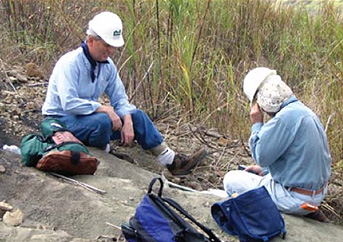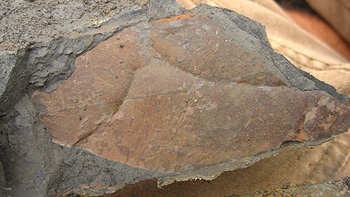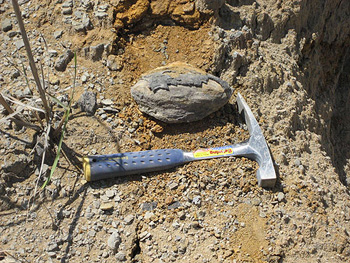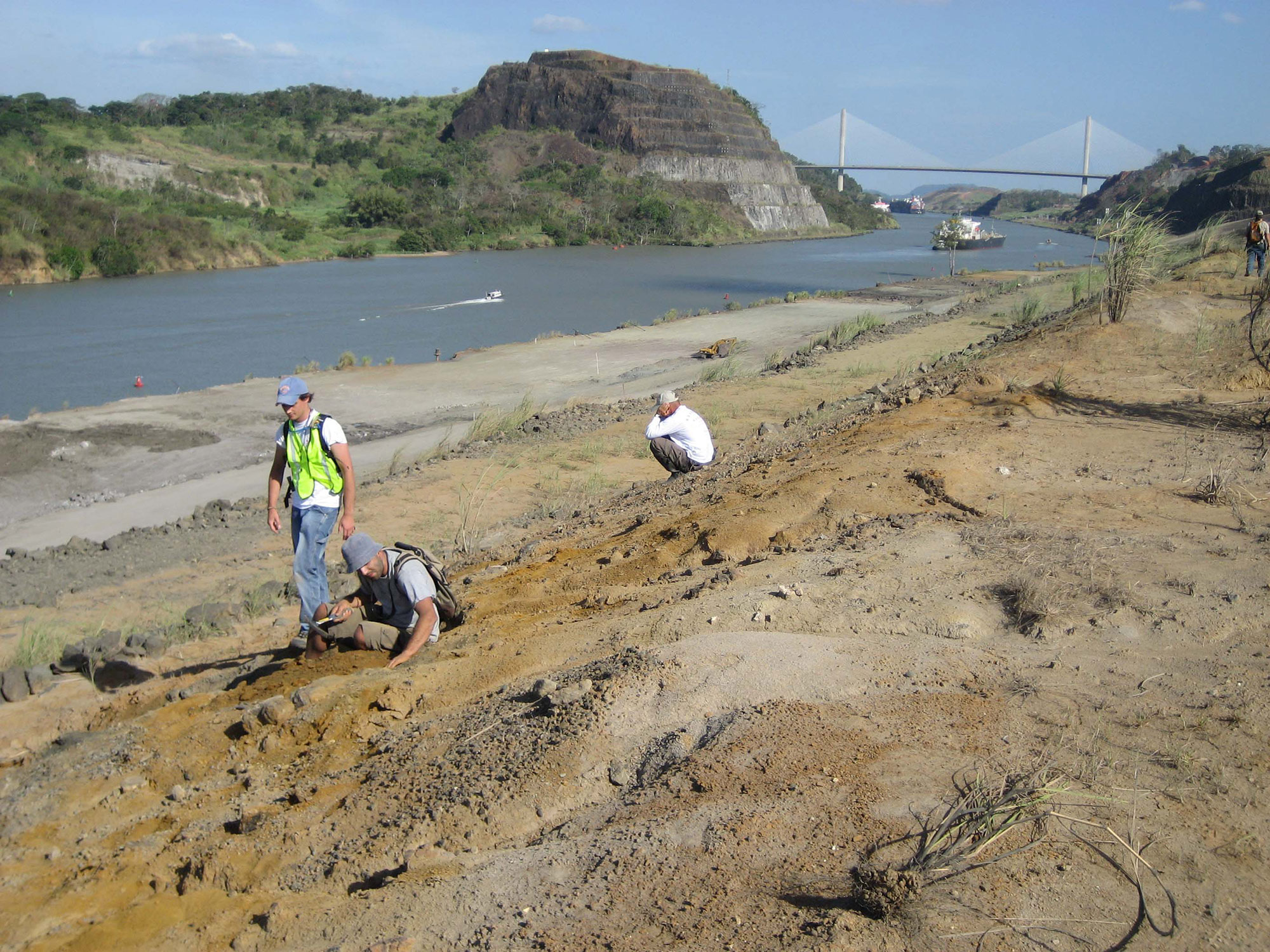
Photo by Michael X. Kirby
Contrary to previous evidence, a new Florida Museum of Natural History study shows the Isthmus of Panama was most likely formed by the Central American Peninsula colliding slowly with the South American continent through tectonic plate movement over millions of years.
The study, co-authored by Florida Museum researchers Michael Kirby, Douglas Jones and Bruce MacFadden, is published in the July 30, 2008, issue of PLoS ONE, the online journal of the Public Library of Science. The study uses geologic, chemical and biologic methods to date rocks and fossils found in sides of the Gaillard Cut of the Panama Canal. The results show that instead of being formed by rising and subsiding ocean levels or existing as a string of islands as scientists previously believed, the Isthmus of Panama was first a peninsula of southern Central America before the underlying tectonic plates merged it with South America 4 million years ago.
“Scientists knew Panama was a North American peninsula, possibly as early as 19 million years ago because fossils that are closely related to North American land mammals, such as rhinos, horses, peccaries and dogs have been found in the Panama Canal during ongoing maintenance,” said Kirby, lead author of the study. “But we were not certain when this peninsula first formed and how long it may have existed.”

Photo by Fabiany Herrera
The canal’s maintenance also exposes sediment layers and marine animal fossils, as well as strata of rocks and clay specific to numerous environments, including lagoon, delta, swamp, woodland and dry tropical forest.
Previous studies placed marine sediment as the youngest layers, suggesting the peninsula was submerged before finally joining with South America. The current study revises the time order of strata, however, and concludes that the Panamanian peninsula joined with South America roughly 4 million years ago.
“Deep-sea deposits in one sediment layer suggest a short-lived strait may have existed across the Panama Canal Basin between 21 and 20 million years ago,” said Jones, director of the Florida Museum of Natural History. “However, these short-lived straits probably had little impact on the long-term evolution of Central America’s flora and fauna.”

Photo by Bruce MacFadden
Kirby explained that because of numerous geologic faults resulting from tectonic plate movement that continues today, there is no area in Panama that allows a full view of the strata making up the land.
“We realized there was a problem with our previous understanding of the stratigraphy, or layering of sediments, in Panama,” Kirby said.
The authors used alternative methods such as strontium isotope dating of fossils and re-analysis of vertebrate fossils to better determine the geologic sequence of the Panama Canal.
“There’s always missing information, like pages out of a book, when it comes to figuring out which layers came first and which were formed later,” Kirby added.
Anthony Coates, a staff scientist emeritus at the Smithsonian Tropical Research Institute in Panama who has extensively studied the geological history of the rise of the Central American isthmus, said the study brings together a diverse array of geologic evidence that convincingly suggests Central America was a peninsula and not a group of islands.

Florida Museum photo by Bruce MacFadden
“They have made an important contribution to the land-based geologic evidence of the plate tectonic history of the formation of the Isthmus,” said Coates, who did not participate in the study. “Their results have important consequences for the nature of the global change engendered by the rise and closure of the isthmus.”
One of the major effects of the formation of the Isthmus of Panama was the intensification of the Gulf Stream in the Atlantic Ocean. While the area that is now Panama was still a peninsula, ocean currents moving north along the north coast of South America spilled over to the Pacific Ocean through the wide Central American Seaway, also called the Atrato Seaway. As tectonic plate movement joined the peninsula with South America to form the present-day Isthmus of Panama, equatorial ocean currents between the Atlantic and Pacific were cut off, forcing water northward into the Gulf Stream current.
“The strengthened Gulf Stream, in turn, delivered enough moisture to allow the formation of glaciers across North America,” Kirby said.
The complete text of the study is available on the publication’s Web site, www.plosone.org/doi/pone.0002791.